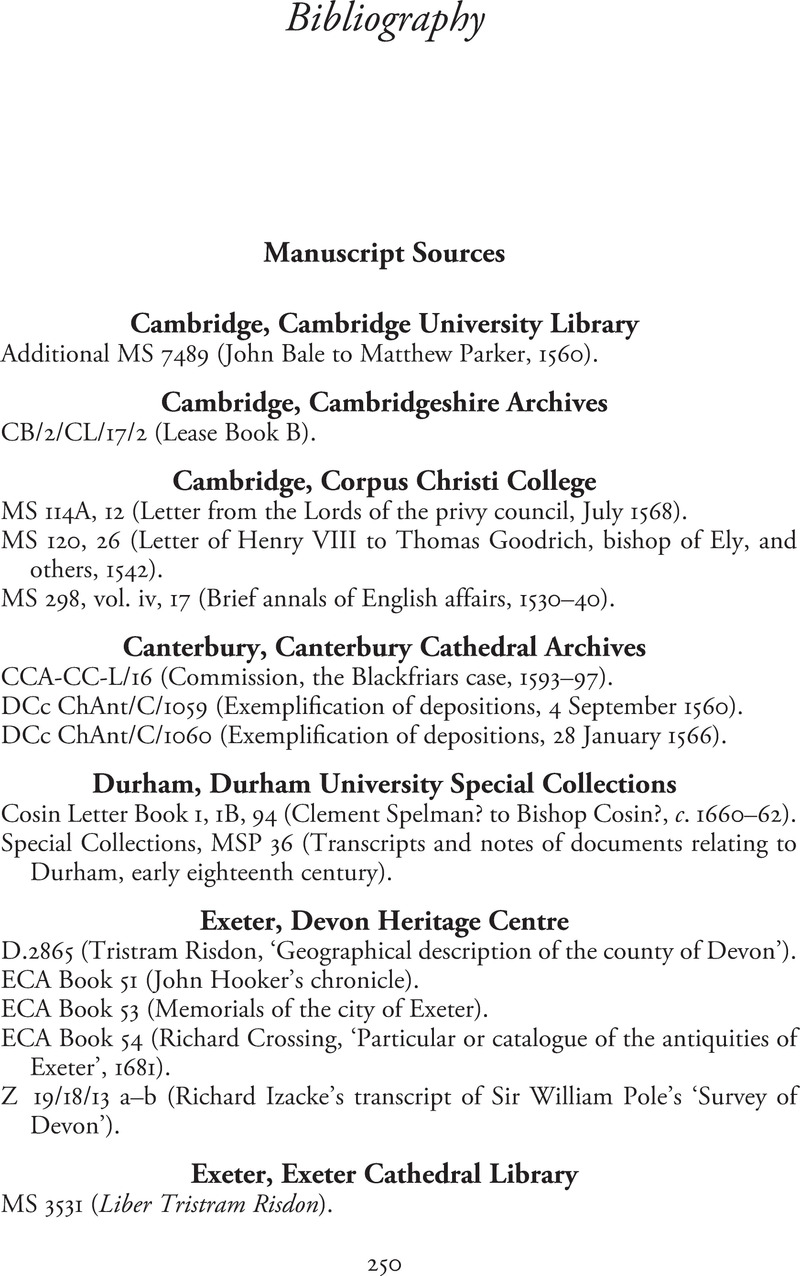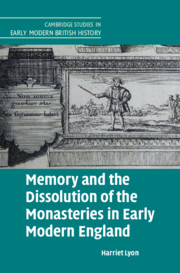Book contents
- Memory and the Dissolution of the Monasteries in Early Modern England
- Cambridge Studies in Early Modern British History
- Memory and the Dissolution of the Monasteries in Early Modern England
- Copyright page
- Dedication
- Contents
- Figures
- Acknowledgements
- Note on the Text
- Abbreviations
- Introduction
- Chapter 1 ‘No News but the Abbeys Shall Be Down’
- Chapter 2 ‘Worthy of Lasting Memory’
- Chapter 3 ‘Raised Out of the Ruins’
- Chapter 4 ‘Many Pretty Odd Tales’
- Conclusion
- Bibliography
- Index
- References
Bibliography
Published online by Cambridge University Press: 08 October 2021
- Memory and the Dissolution of the Monasteries in Early Modern England
- Cambridge Studies in Early Modern British History
- Memory and the Dissolution of the Monasteries in Early Modern England
- Copyright page
- Dedication
- Contents
- Figures
- Acknowledgements
- Note on the Text
- Abbreviations
- Introduction
- Chapter 1 ‘No News but the Abbeys Shall Be Down’
- Chapter 2 ‘Worthy of Lasting Memory’
- Chapter 3 ‘Raised Out of the Ruins’
- Chapter 4 ‘Many Pretty Odd Tales’
- Conclusion
- Bibliography
- Index
- References
Summary

- Type
- Chapter
- Information
- Publisher: Cambridge University PressPrint publication year: 2021



